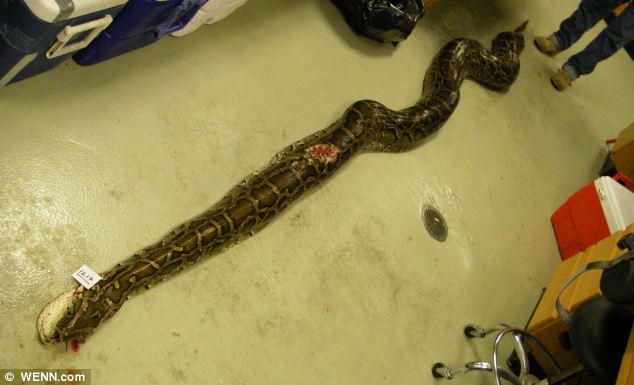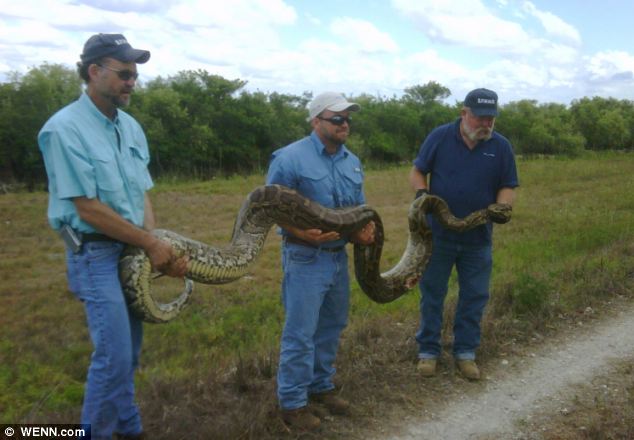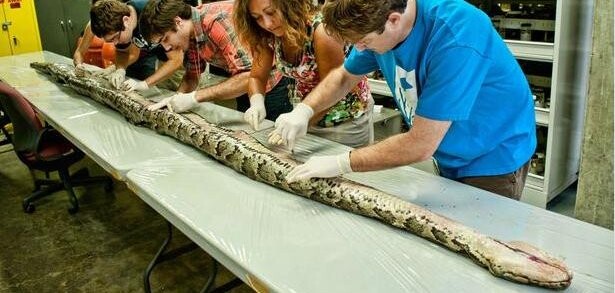This monstrous creature was poised to unleash hell on one of America’s most precious and fragile ecosystems.
But with great luck, the vast and menacing Burmese python was caught by rangers in Florida before it could lay eggs containing the 59 super-predators inside her.
The image was taken in 2009 but the problem is a very pressing one in 2012. Nothing and no one is safe when these marauding foreign invaders emerge from the fetid swamp that has become their home.

Slithering hell: A Burmese python cut open by a ranger in the Everglades National Park in Florida in 2009 revealed that she was pregnant and carrying 59 embryonic pythons
Super- pythons like this one- are causing mayhem in the Everglades where they are decimating native species, numbers of raccoons, opossums, bobcats and other mammals.

With no natural predators scientists fear the pythons are disrupting the food chain and upset the Everglades’ delicate environmental balance in ways difficult to predict.
Many of them were originally pets that were turned loose by their owners when they got too big to manage.
Others are believed to be descendents of domestic pythons that escaped from pet shops during Hurricane Andrew in 1992 .

Elite predator: Super- pythons like this one- are causing mayhem in the Everglades where they are decimating native species, numbers of raccoons, opossums, bobcats and other mammals

Reptile ravage: A recent study, published last month in the Proceedings of the National Academy of Sciences, found that sightings of medium-size mammals are down dramatically
BURMESE PYTHONS
Burmese pythons can grow to be 26 feet long and more than 200 pounds.
Pythons are not venomous. Instead, they kill their prey by locking it in their jaws, which boast powerful, backward-facing teeth, then crushing it in their coils. They then swallow it whole.
Their success is due to their ability to gorge on huge meals – and then go without food for months.
After a big kill, the snake’s insides remodel themselves to cope with such a feast. Their heart grows in size to produce more blood for digestion, extra stomach acid is produced and the intestines rearrange themselves.

A recent study, published last month in the Proceedings of the National Academy of Sciences, found that sightings of medium-size mammals are down dramatically — as much as 99 percent, in some cases — in areas where pythons and other large, non-native constrictor snakes live wild.
Tens of thousands of Burmese pythons, which are native to Southeast Asia, are thought to inhabit the Everglades, where they thrive in the warm, humid climate.
The National Park Service says 1,825 Burmese pythons have been caught in and around Everglades National Park since 2000.
Among the largest captured was a 156-pound, 16.4-foot one caught last month.
In 2010, Florida banned private ownership of Burmese pythons. Earlier this month, U.S. Interior Secretary Ken Salazar announced a federal ban on the import of Burmese pythons and three other snakes.








